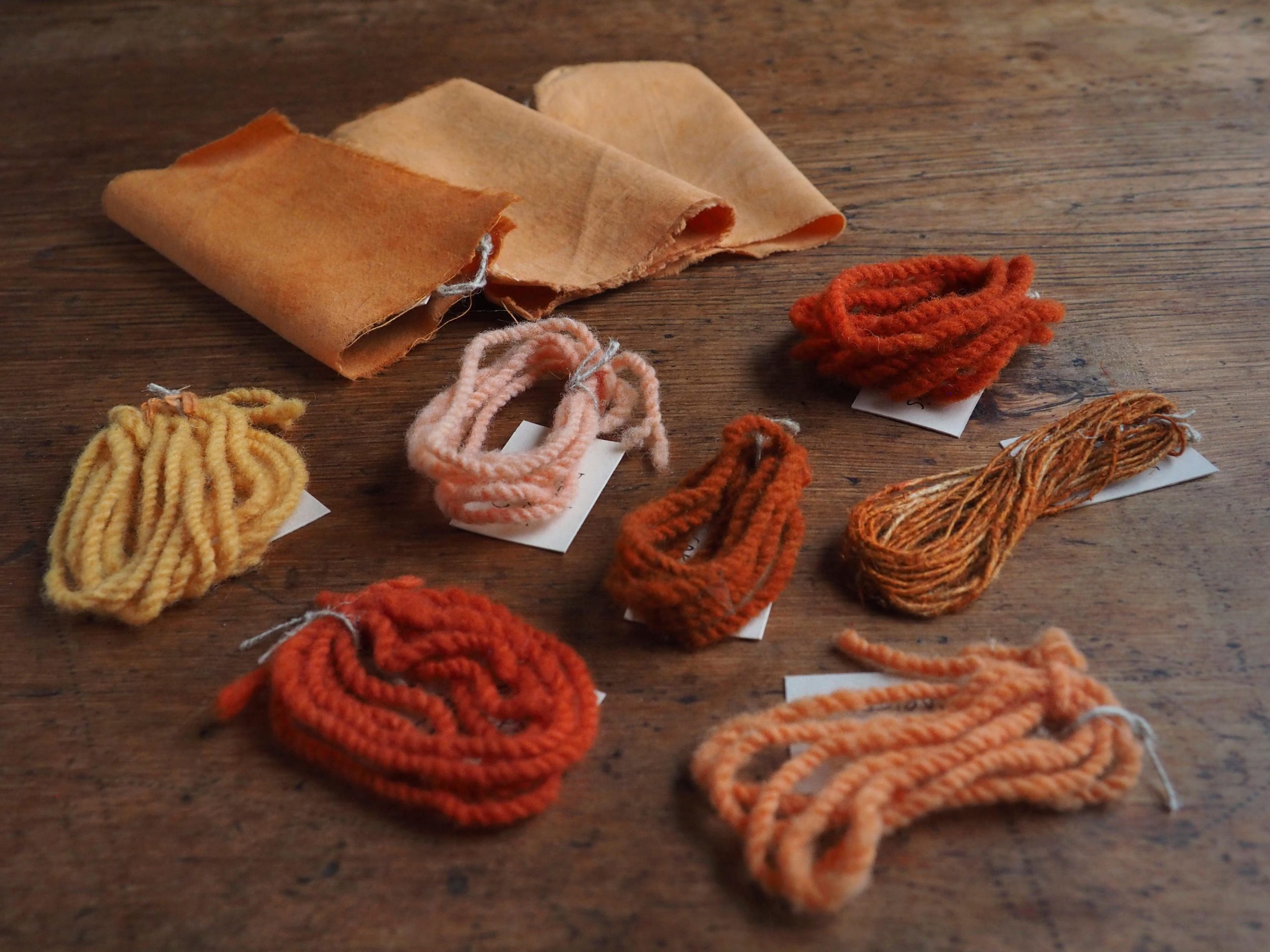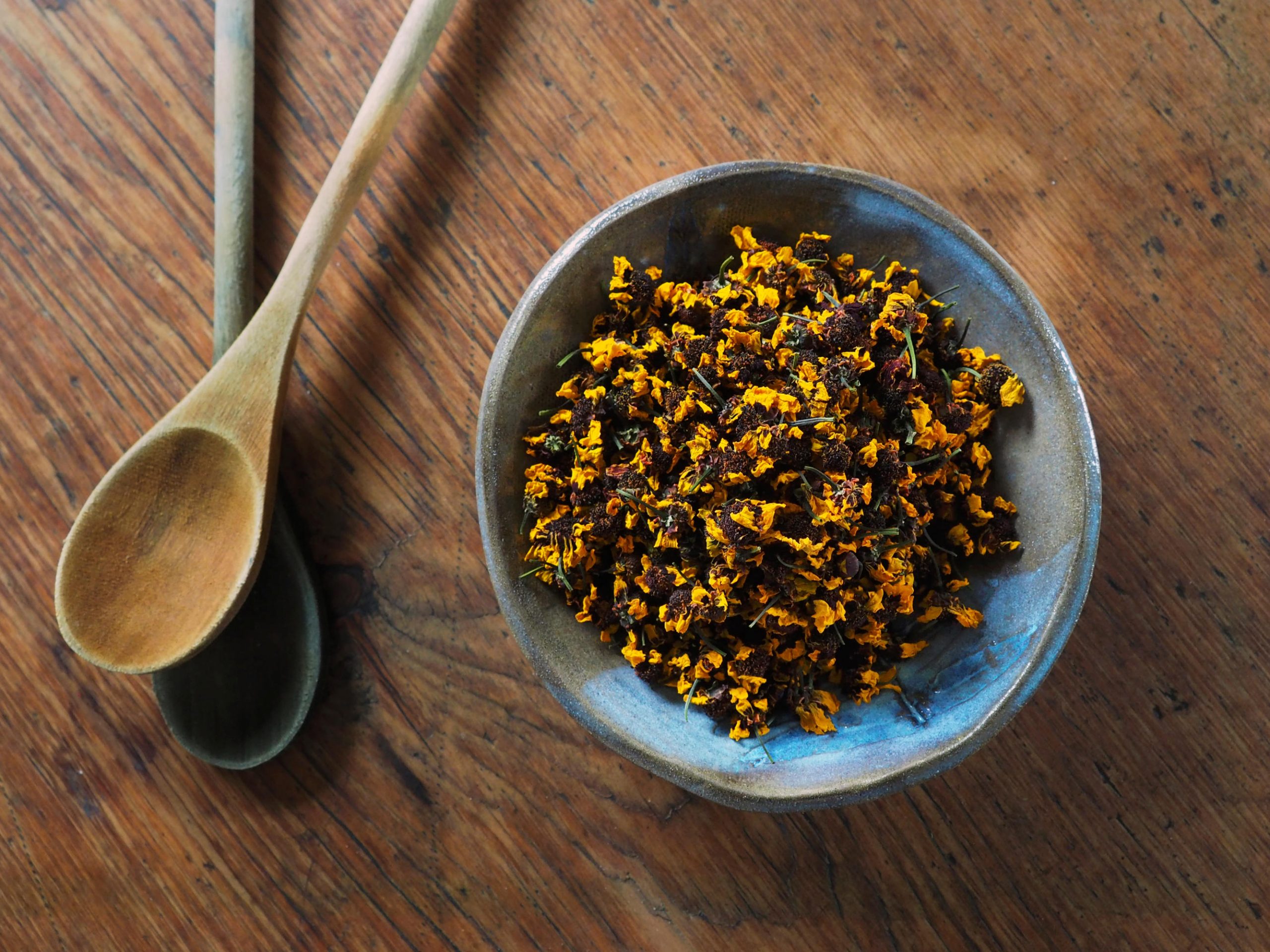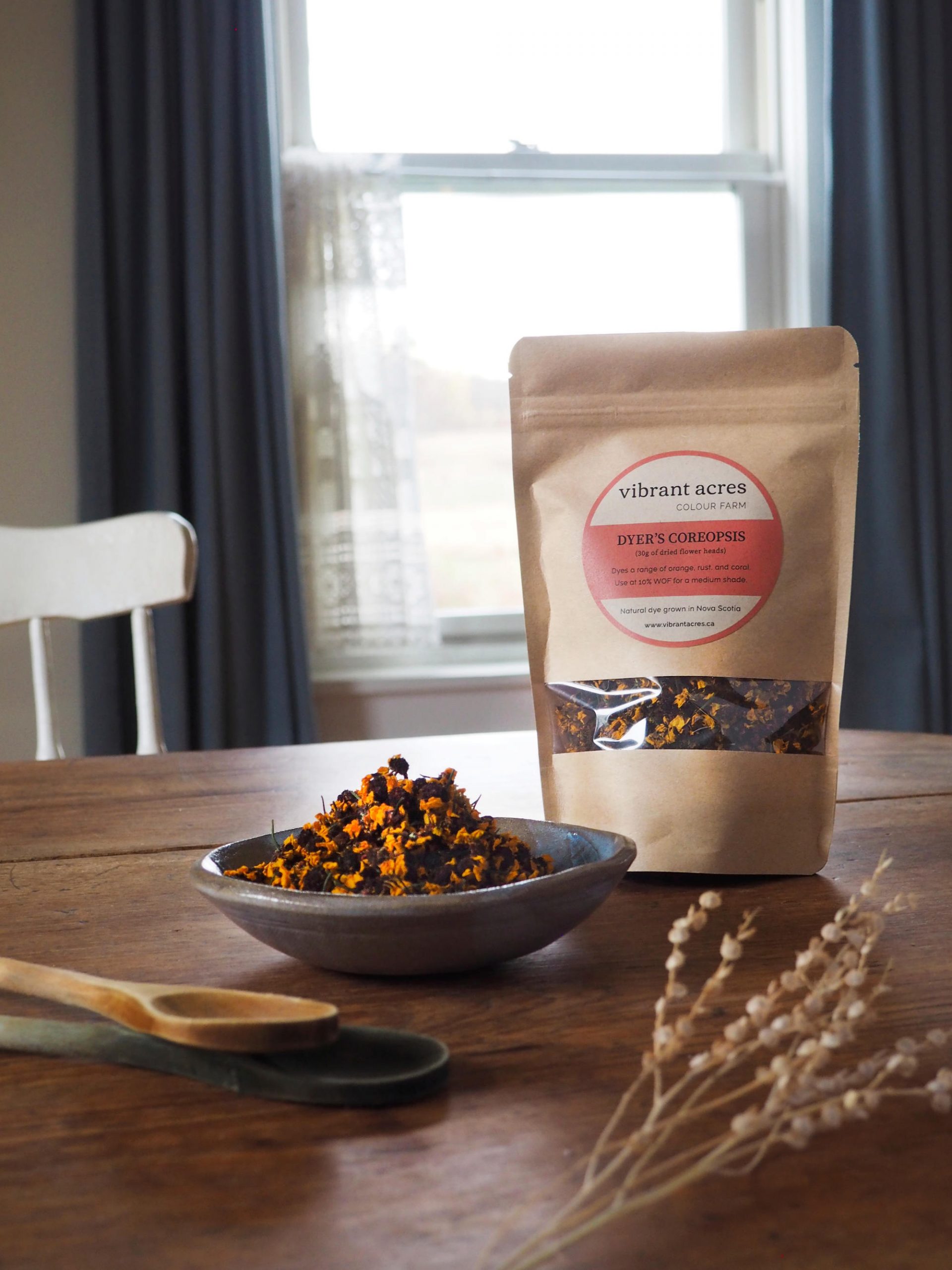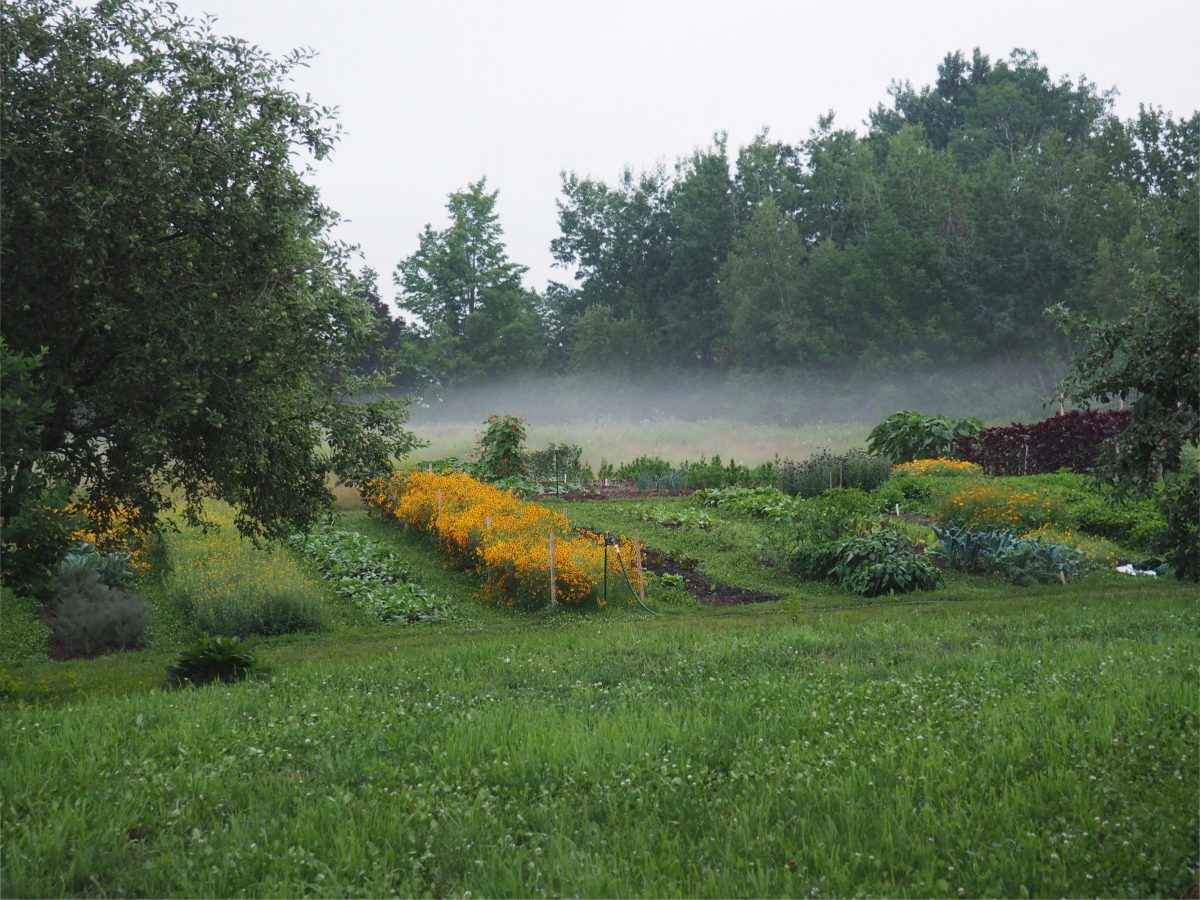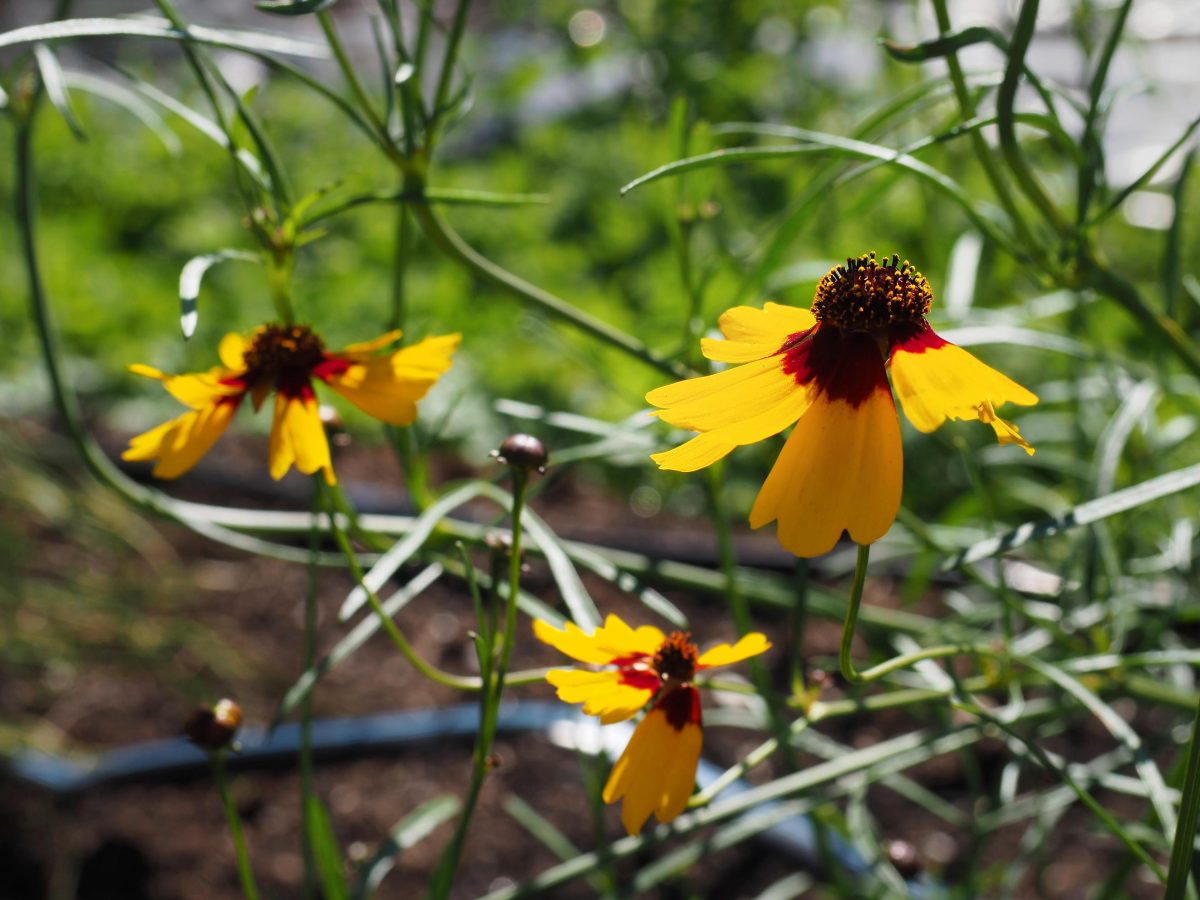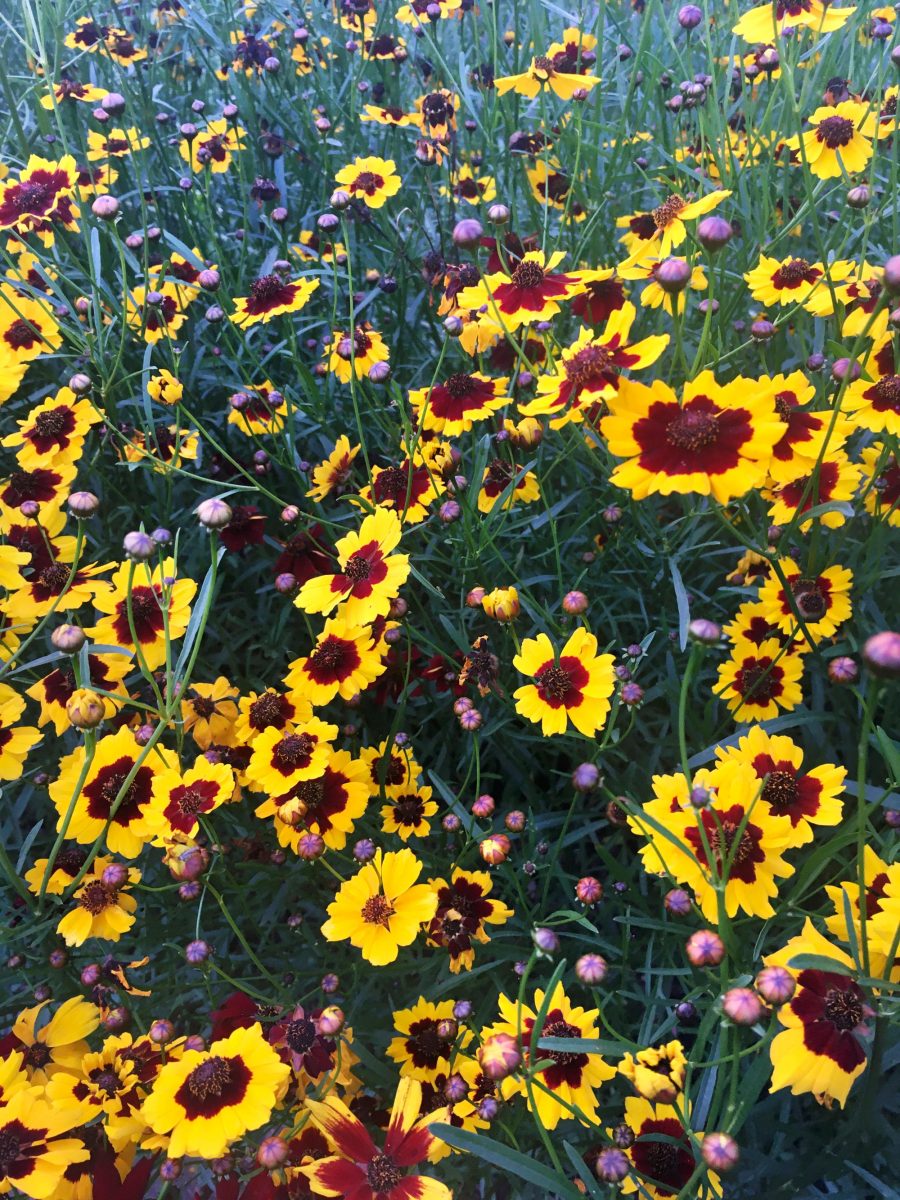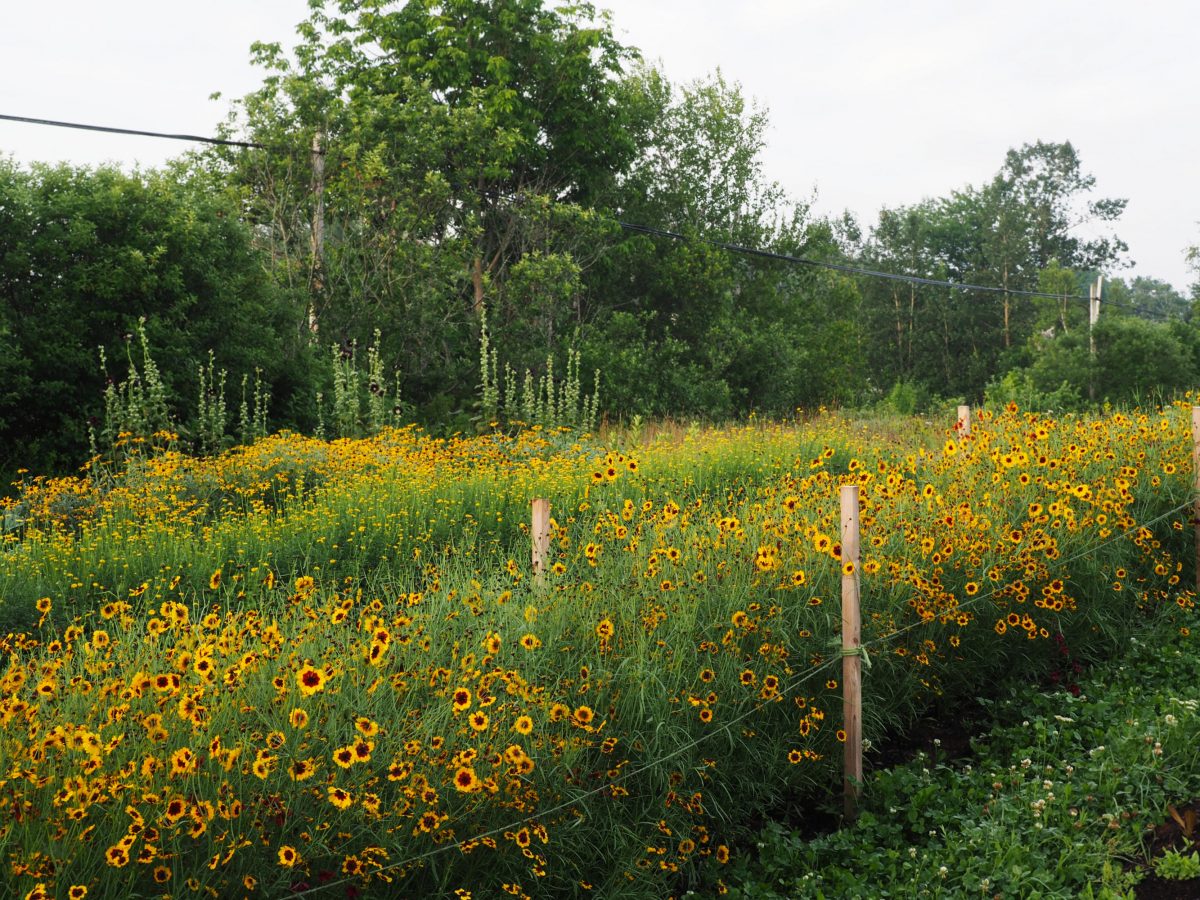Coreopsis tinctoria
Dyer’s Coreopsis is one of the earliest dye plants to flower on the farm. We sow it in very early spring and it bursts into cheerful yellow and maroon flowers by the beginning of June. Coreopsis produces an abundance of tiny flowers that can be somewhat time consuming to harvest. We pick them by hand and dry them immediately to preserve the vibrance and colour. Coreopsis dyes a beautiful strong warm orange colour and can easily be modified with iron or PH to achieve yellows, pale pinks, corals, and deep rust colours.
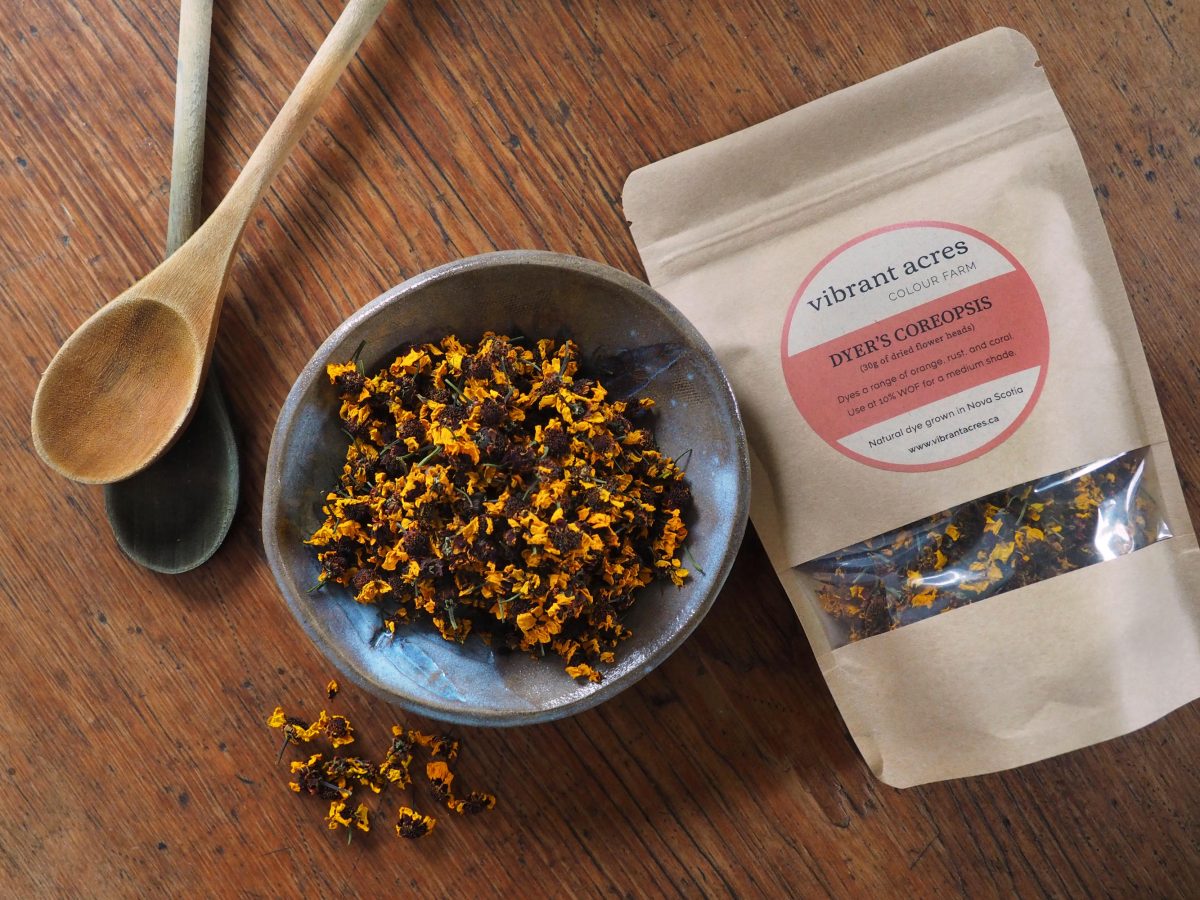
Key Dye Colours: Orange, rust, coral
Dye Process: Colour is extracted by bringing to a gentle simmer until the water turns a bright orange. Alternatively, you can pour boiling water over the flower heads and leave to soak overnight for use the following day.
Weight of Fibre (WOF): Use at 10% for a rich medium shade. For a darker colour, use more; for a lighter colour, use less. A small bag will dye ~300g of fibre and a large bag will dye ~1kg of fibre. A typical wool skein is 100g.
Key Modifiers: Iron produces a rust colour. Shifting the PH of the dye bath to alkaline will produce coral pinks. An acidic PH will produce a more yellow colour.
Washfastness: Good.
Lightfastness: Good.
Overall Colourfastness: Good.
Dyer’s Coreopsis produces a vibrant range of colours with relatively little effort to extract or dye which makes it incredibly versatile and satisfying to dye with. You can continue to use the bath until it is exhausted for paler and/or more yellow shades.
Natural colour grown with care
This natural plant dye was grown with care on our small farm in Nova Scotia’s Annapolis Valley. All of our dye plant material is dried on site immediately after harvest to preserve quality and maximum vibrancy of colour.
Natural dyes can only be used on natural fibres (cotton, linen, wool, bamboo, hemp, silk). For best results, natural fibres should be pre-prepared using a mordant or tannin before dyeing. Natural dyes and mordants are available in our online store.
Natural dyes create unique living colours that will evolve and wear over time as they are washed, worn, and loved creating colours and garments that are alive, telling the story of their use. While they are not as consistently repeatable or as durable as many synthetic dyes, they are far more environmentally friendly and, in our opinion, absolutely unmatched in magic and beauty. If you are new to natural dyes, we have a free guide to getting started with natural dyes.
